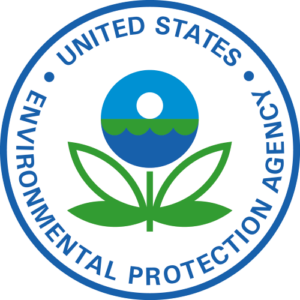
The Interstate Natural Gas Association of America (INGAA), a trade association of the interstate natural gas pipeline industry, respectfully submits these comments in response to the Environmental Protection Agency’s (EPA) proposed rule, “Proposed Revisions to the Prevention of Significant Deterioration and Title V Permitting Regulations for Greenhouse Gases (GHG) and Establishment of a GHG Significant Emission Rate.” 81 Fed. Reg. 68,110 (Oct. 3, 2016) (the Proposed Rule). The Proposed Rule revises the provisions of the Prevention of Significant Deterioration (PSD) and Title V Permitting Regulations to conform with the U.S. Supreme Court’s decision in UARG v. EPA, 134 S. Ct. 2427 (2014), and the amended judgment issued by the D.C. Circuit, in Coalition for Responsible Regulation v. EPA, Nos. 09–1322, 10–073, 10–1092 and 10–1167 (D.C. Cir. April 10, 2015). For instance, the Proposed Rule seeks to ensure that neither the PSD nor the Title V rules require a source to obtain a permit solely because the source emits or has the potential to emit (PTE) GHGs above the applicable regulatory thresholds. In addition, EPA is also proposing a significant emission rate (SER) for GHGs under the PSD program that would establish an appropriate threshold level below which Best Available Control Technology (BACT) is not required for a source’s GHG emissions.
INGAA members operate many natural gas transmission and storage compressor stations that are subject to the PSD and Title V permitting regulations. The Proposed Rule will significantly affect INGAA’s members, and INGAA welcomes the opportunity to submit comments.
Natural gas provides 25 percent of the basic energy needs in the United States. INGAA’s members represent the vast majority of the interstate natural gas transmission pipeline companies in the United States, operating approximately 200,000 miles of pipelines, and serving as an indispensable link between natural gas producers and consumers. The North American natural gas pipeline system is an energy highway integral to U.S. energy infrastructure. INGAA and its members have a long history of working collaboratively with a variety of stakeholders on air quality and GHG issues, including on methane.
PSD and Title V Permit Applicability for GHG Emissions
As noted above, EPA has proposed revisions to the PSD and Title V permitting regulations in response to the U.S. Supreme Court’s June 23, 2014 decision in Utility Air Regulatory Group (UARG) v. EPA and the April 10, 2015, Amended Judgment by the United States Court of Appeals for the District of Columbia Circuit (D.C. Circuit) in Coalition for Responsible Regulation v. EPA. In UARG, the Court ruled that PSD permitting requirements apply to GHG emissions from sources that are otherwise required to obtain a PSD permit because they have the potential to emit large amounts of conventional pollutants (i.e., anyway sources). The Court also held that EPA may not treat GHGs as an air pollutant for the specific purpose of determining whether a source (or modification thereof) is required to obtain a PSD permit, or for the purpose of determining whether a source is a major source that is required to obtain a Title V permit. INGAA supports EPA’s proposed applicability revisions to the PSD and Title V permitting regulations because the proposed revisions to the PSD and Title V permitting regulations are consistent with the Court’s directive for further action.
Significant Emission Rate for GHGs
EPA is proposing to establish a SER for GHGs at 75,000 tons per year (tpy) carbon dioxide equivalent (CO2e). The SER establishes the de minimis level below which BACT is not required for the subject pollutant. INGAA supports the establishment of the 75,000 tons per year CO2e SER.
EPA is also soliciting comments on a range of GHG SER levels from 30,000 to 75,000 tons per year CO2e. INGAA recommends that EPA set the GHG SER level at 75,000 tons per year CO2e because a lower threshold would create an overwhelming regulatory burden for EPA, the States, and local permitting authorities to issue permits and for the affected industry that must comply with these additional requirements. See 81 Fed. Reg. 68,112 n.5 (“This value was based principally on addressing potential permitting burdens. . . .”); id. at 68,115 (“state and local permitting authorities would be burdened by the large number of these permitting applications, which would be orders of magnitude greater than the current inventory of applications and permits and would vastly exceed the administrative resources of the permitting authorities.”); id. (“EPA selected the 75,000 tpy CO2e level . . . based on a judgment that the administrative burdens of addressing GHGs in the PSD program would be manageable using that value as an applicability level.”).
The 75,000 tpy CO2e level is also more appropriate than a lower threshold such as 30,000 tpy CO2e because 75,000 tpy CO2e is more characteristic of larger sources that warrant PSD review or a Title V operating permit. For example, common combustion sources at natural gas transmission facilities that have criteria pollutants emissions that are well below the PSD threshold would exceed the low end of the CO2e SER range discussed in the Proposed Rule.
For natural gas transmission compressor stations, NOx is the criteria pollutant that is most likely to exceed PSD thresholds. To clarify this point, INGAA has provided a few examples of the relative emissions of NOx and GHGs. The following examples show that adopting a lower SER would be inconsistent with the UARG Court’s conclusion that GHGs alone should not trigger PSD or Title V permitting obligations and, therefore, the threshold would serve no practical purpose:
- A new combustion turbine that emits 30,000 tpy CO2e would emit approximately 14 tpy NOx (at 15 ppmv NOx), which is well below PSD thresholds for new or modified facilities.
- A new reciprocating engine that emits 30,000 tpy CO2e would emit approximately 24 tpy NOx (at 0.5 g/bhp-hr NOx), which is well below PSD thresholds for new or modified facilities.
- At 75,000 tpy CO2e from combustion sources, the associated NOx emissions would be approximately 35 tpy for a combustion turbine and 69 tpy for a reciprocating engine.
As these examples show, establishing a lower GHG threshold could affect much smaller sources. Adopting a lower SER threshold like 30,000 tpy would provide no practical purpose because “anyway” sources would always exceed the CO2e SER. Thus, a 75,000 tpy CO2e SER provides a more meaningful GHG trigger level for facilities that would be PSD “anyway” sources.
A lower threshold also is unnecessary because industry is already implementing BACT for sources that would potentially be subject to the lower PSD SER thresholds and GHG BACT requirements (e.g., internal combustion engines, turbines, boilers, emergency generators, fugitives/vented sources). Any new source or modification to an existing source triggering PSD permitting would be subject to any existing new source performance standard (NSPS) that requires control of criteria and GHG emissions. The following NSPS obligations would apply to any natural gas transmission and storage facilities that would be subject to these PSD regulations and the associated SER levels: 40 C.F.R. Part 60 Subpart Db, Dc, GG, KKK, LLL, IIII, JJJJ, KKKK, OOOO, OOOOa). There are few other technologies available that are viable and cost effective for controlling GHG emissions from these source types or units. Therefore, a lower SER threshold subjecting projects to a PSD GHG BACT review would not yield further GHG emission reductions. Rather, setting a lower threshold would merely result in additional administrative burden for the agencies and industry.
Overall, a 75,000 tpy CO2e threshold is appropriate because it would include the largest sources, capture a significant amount of the national GHG inventory, and include additional sources not otherwise subject to PSD while minimizing the potential for a significant and administratively
infeasible burden in PSD permitting workload for EPA, state and local agencies and the regulated community.







